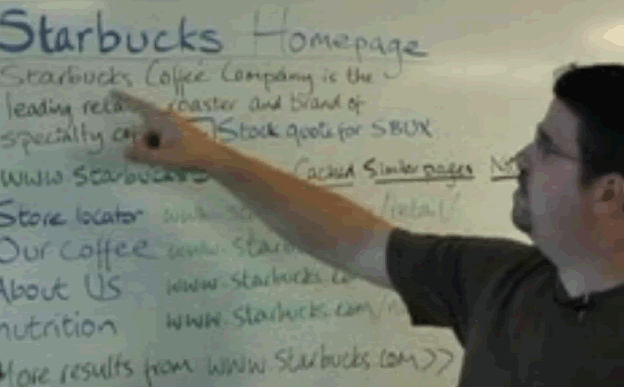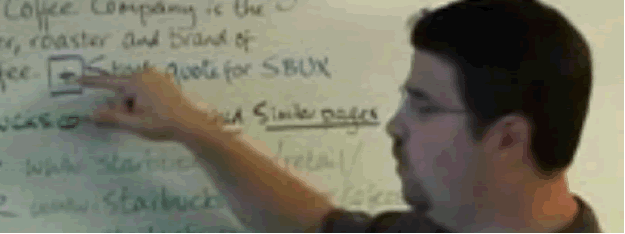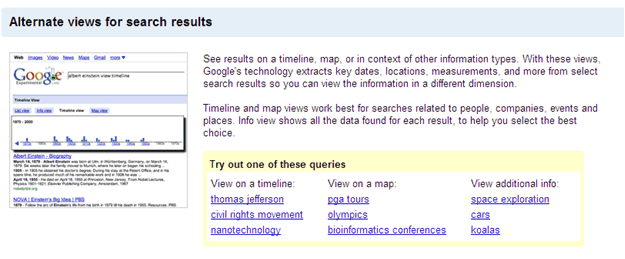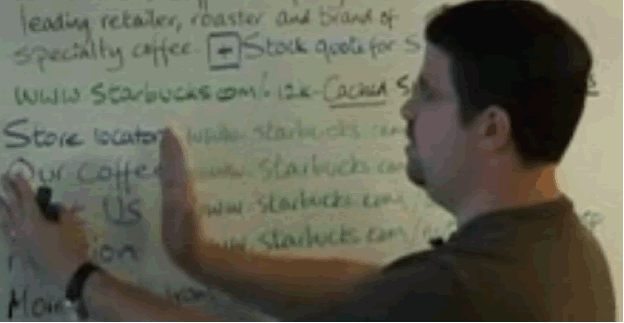Matt Cutt Discusses Snippets - Mattcutts Video Transcripts
Matt Cutt Discusses Snippets
So just to remind everybody, I am visiting the Kirkland office and they said you know what lets grab a video camera and just talk about a few things and have a little bit of fun and put these videos up on the web.
So one of the things that we thought we'll talk about is a snippet, what are the different parts of the snippet? How do we choose which part of the snippet to show and not show?
So since we are up in the specific North West let's talk a little bit about Walkthrough this snippet of starbucks and what that it looks like and talk through the different parts.
Alright the first thing you'll see is the title and that's typically what you set on the title of your webpage. So "starbucks Homepage" is what Starbucks use for www. Starbucks.com. Now in general Google reserves the rights to try to change the snippet and make it as useful as possible for users always doing all kind of different experience. Like is it more helpful to show two dots or three dots, you want to end with dots, you want to start with leading spaces, how do you find the most relevant part of the page? And try to say this is what we should be showing. But the majority of the time you have a great deal of control of how about how things get presented.

So in this case starbucks uses the title "Starbucks Homepage" and just a quick bit of SEO advice for starbucks, "Home page" na a few people might search for that but I might say something like "Starbucks coffee" where people are more likely to search for that okay enough of the free advice for starbucks. The next thing that you see is something that we call as the snippet

So next thing that you see is something that we call has the snippet, "Starbucks coffee company is the leading retail coaster and brand of specially da dad
Now where does that snippet come from? It can come from many different places, suppose for example we weren't able to call the URL, May be for whatever reason it was down and we couldn't get a copy of it, we don't have anything from the page not even the Meta description tag nothing at all. In those cases we sometimes do rely on the open directory project. So starbucks I wouldn't be surprised if it's in the open directory so if we weren't able to call the page we might pull the description form there. Another thing we sometimes do is pull the description from a place within the page. So suppose you got a phonebook and you're looking for somebody's name and the name is way down at the bottom it's a lot more helpful to show that person's name from the bottom of the page and may be a few words from either side of that person's name than it is to show like the first fifty words of the page, so we do try to find the most relevant parts of the page Some times its single snippet, sometimes its multiple parts of the page and combine that together and people are little bit of context that this page is really I am looking for. But neither of these two is at the open directory project or directly from the within the content of page body itself. And in this case I looked into it and view source that this is the Meta description tag.
So we did post on the Google webmasters blog just for a while that how these snippets get picked, and it turned out you can use your own Meta description tag and in many cases that is exactly what we will choose to use as a snippet. But you want to be careful because this is a very fine snippet, but maybe there is some other snippet that can work better. You know people would read it and say oh I really want to click through and find out more about that. You can experiment with different Meta descriptions and see that the one that gets more clicks is the one that works better. But we use several different sources of data when deciding how to pull things together. In this case starbucks is also a company so we show a little + box where if you want you can click the plus box and you can expand and see a stock chart for Starbucks. You can see if they are doing well in the market.

There are a lot of these different options. For example if you are having an address on your page many times it will show a plus box and it will say view a map of and then you can have your address. And we are always looking for new ways to surface interest in data. If you go to google.com/experimental we do have views where you can look at search results on a time lines, search results on a map, you can even see all the search results for images and even measurements. So if you going to search for Koalas or Koala bear, you can say show me the measurements. Then it will show you all the things like oh Koala bears are 20 pounds and stuff like that which is really helpful.

In general or whatever interesting information you have on your page that user will be interested in well try to surface that or show relevant information like stock quote or stuff like that. There is also something like that's a little subtle and unnoticed is that we have bolded the starbucks, that's because someone has queried for starbucks. So often times if you do a query and if those keywords are on the page, well make them bold so that people know what you typed is actually on that page. We know about morphology, we know about synonyms. If you typed in car, we can sometimes return search results that have automobiles. But that wouldn't be bolded, or wouldn't be likely to be bolded and what more likely is whatever you typed in is what's going to be bolded. So in that case it gives you little more information and shows how relevant that page.
Working down a little bit you can see the URL which you are actually going to end on, 12K stands for 12 kilobytes which is relatively small page that means it will load pretty quickly. And then you see the cached links, imagine for example the site is down. May be you are the webmaster of the page and you accidently deleted it, but then you can look at the cache page and you could recover the source of that page, then you could put it back up again. The cache page also has really interesting features. If you click on it, It shows us the last crawled date, you can say ok well today is October 7th look at the cached page and oh we last crawled the page on October 6th then you know how precise the search results are.
Sometimes if we are very precise, then we can show an indicator right on the snippet here below ( next to 12k) that we crawled 17 hours ago to let you know that we are very precise.
Similar Pages shows you related pages to start about may be other businesses or other pages that you might be interested in. And a lot of time if you are logged in to Google you will "NOTE THIS"

If you are a student of if you are doing research it's really handy it works with Google note book and all it does is that it saves this off, as I am doing my research I want to save this result can be able to come back to it and may be aggregate it later and may be aggregate all the stuff together on some research chapter.
And then this is really nice, this is what actually to be a little indented on the snippet. But what we call this is site links. There are a couple of things we need to know about site links. First off, no money is involved. Somebody always asks, "So did starbucks pay some money to get them?" No it's purely algorithmic.

And the second thing is it is purely algorithmic it's not done by hands so it's not like we go to store box and say may be we are interested in store locator and then nutrition and stuff like that. But there is a lot of sophistication going on here for example on this page the title is actually Starbucks Store Locator but you don't need to see that most of the times so we can say store locator and if you look at this page the title is actually like Beverage details and something and in fact the link to that page is nutrition.
So we are sort of selective we try to pick the sort of little description that gives people enough information and make sure where they can say "Oh! The store locator is what I want and I am going to go directly there" or I wanted to find out if I get a Mocha how many calories is that so I can go straight to the nutrition. So it's completely algorithmic and no money is involved in that. And then when we get to the bottom if we have a lot of results for a page may be we show one or two and then we will say you know what may be you want to see more results from Starbucks and what that lets you have is a more diversity so you can see one or two results from starbucks and maybe you want to see other results for that query. That sure helps in clear diversity of that page and at the same time lets you dive deeper if you want to.
So that's a very quick tour on what a Google snippet is. Hopefully it was helpful.
Why we prepared this Video transcript?
We know this video is more than a year old but still there are people who have questions about their site and want to listen from a Search Engine Expert. Also there are millions of Non-English people who want to know what's there in this video so a transcript is something that can be easily translated to be read in other languages. We know there are people with hearing disability who browse our site this is a friendly version for them where they can read and understand what's there in this video
This transcript is copyright - Search Engine Genie.
Feel free to translate them but make sure proper credit is given to Search Engine Genie
Labels: Mattcutts, Mattcutts Video Transcript, Video Transcripts, Videos





0 Comments:
Post a Comment
Links to this post:
Create a Link
<< SEO Blog Home